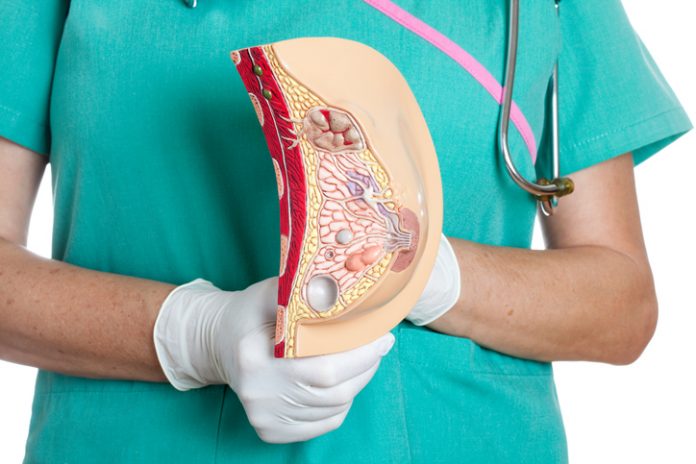
Researchers from the Antoni van Leeuwenhoek-Netherlands Cancer Institute (AVL) have shown that patients with breast cancer that has spread to the lymph nodes can avoid extensive lymph node removal if the largest node responds fully to primary systemic therapy.
In a presentation to the 14th European Breast Cancer Conference, Annemiek Van Hemert, a doctor and PhD student in the Surgical Oncology Department of AVL-NCI in Amsterdam, said: “If we are able to predict the response based on the removal of only one lymph node, it means we can safely avoid extensive removal of the lymph nodes if no living tumor cells are left. This will avoid serious complications, such as painful swelling in the arm, known as lymphoedema.
“However, although clinicians use a number of staging techniques to predict the response, until now robust data on cancer outcomes have been lacking, especially in patients whose cancer has spread to more than three lymph nodes.”
Van Hemert and colleagues carried out a study among 218 patients who were treated according to the MARI (“Marking Axillary lymph nodes with Radioactive Iodine seeds”) protocol between 2014 and 2021.
The protocol was developed at the AVL Hospital in 2014 and is now part of routine clinical practice at several hospitals throughout the Netherlands. Initially, patients undergo imaging tests to assess the extent of cancer spread to the lymph nodes and the largest axillary lymph node is marked with a radioactive iodine seed.
After this, patients undergo primary systemic treatment: either chemotherapy or targeted therapies followed by surgery. During the surgery, only the iodine marked lymph node, the MARI node, is removed and examined it for any remaining living tumor cells, Van Hemert explained.
“Whenever the MARI node showed there were no residual tumor cells, in other words a pathological complete response (pCR) to the primary systemic treatment, then we did not remove any additional lymph nodes. Patients who had residual disease in the MARI node had further lymph nodes removed: known as an axillary lymph node dissection (ALND). All patients received radiation treatment.”
Van Hemert reported that just under half (47%) of patients had a pCR of the MARI node and were treated with radiotherapy alone, while the remaining 53% had residual disease of the MARI node and underwent ALND plus radiotherapy.
During a median 44 months of follow-up, 2.9% of patients in the MARI-pCR group experienced recurrence in the axillary nodes compared with 3.5% of those in the MARI-non pCR group.
In addition, invasive disease-free survival and overall survival rates were higher among participants with a MARI-pCR than among those with no MARI pCR, at 89% versus 82% and 95% versus 90%, respectively.
Van Hemert described these survival rates as “excellent” and said that the data show “we can safely omit the extensive removal of axillary lymph nodes in patients who achieve a pCR in the MARI node after primary systemic treatment.”
She told Inside Precision Medicine that this allows for “a personalized treatment in breast cancer.”
The researchers will be collecting further data on outcomes over a longer period. They have also started the DESCARTES trial to investigate the safety of omitting radiation treatment in a selected group of patients with tumors smaller than 2 cm in diameter, no evidence of the cancer spreading to the lymph nodes, and a pCR after primary systemic treatment.













